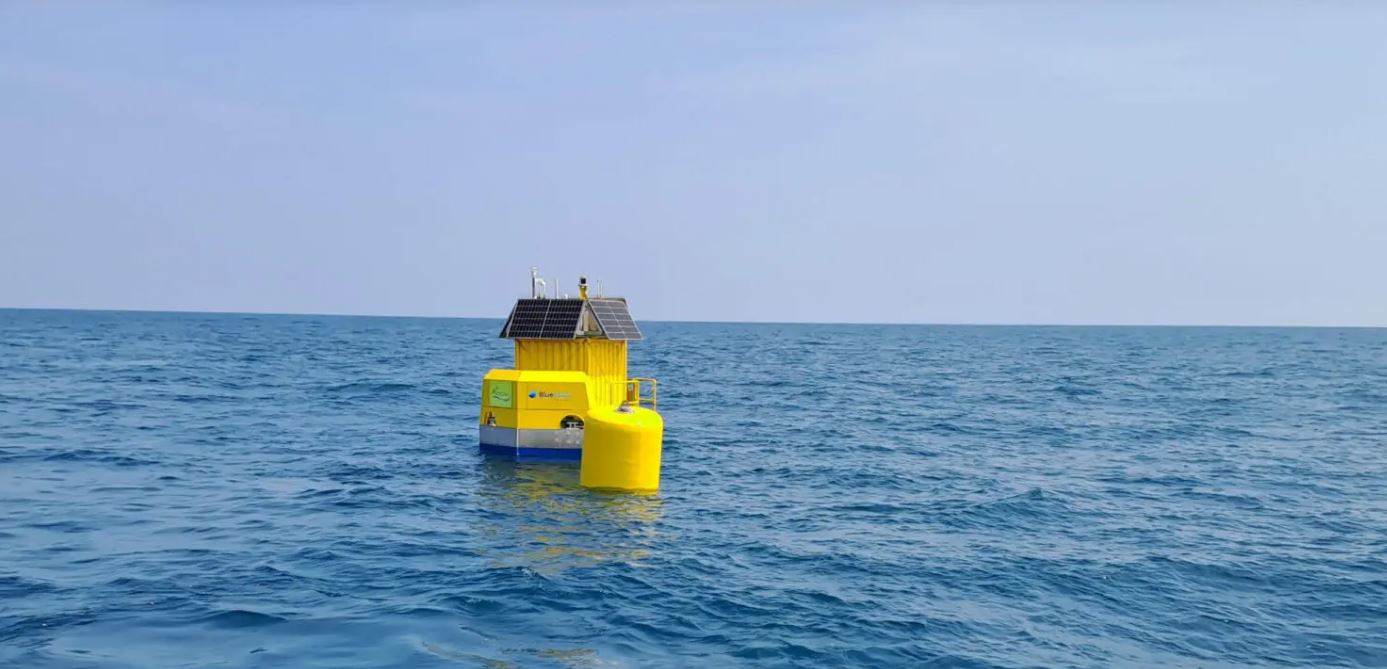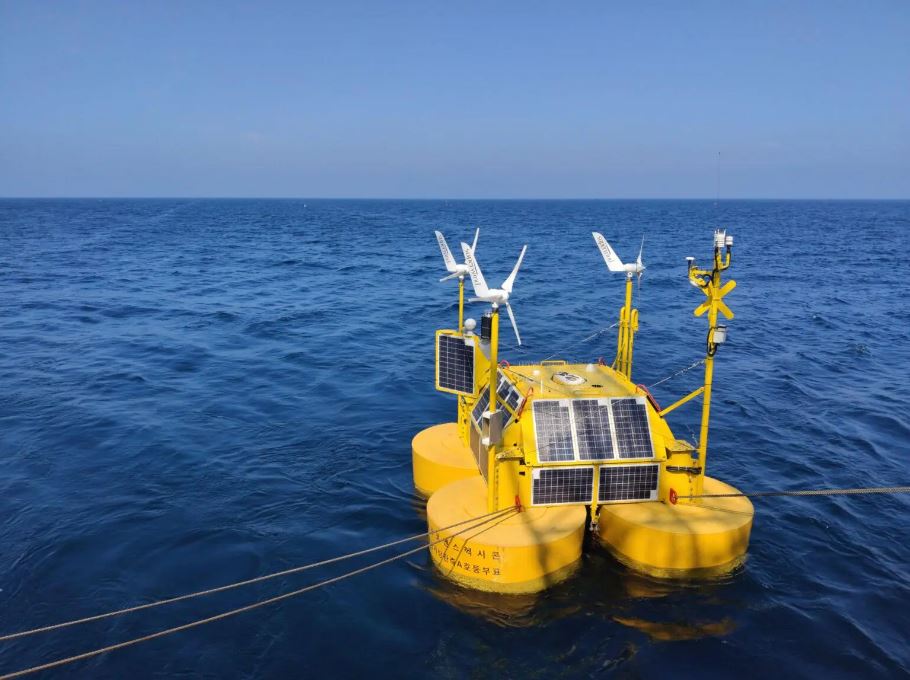
As the world is quickly adopting to less intrusive, more efficient power generation schemes, offshore wind is topping the list because of its ability to deliver power either directly to the grid or into battery storage systems.
Offshore wind is also becoming a default because it doesn’t interfere with a landscape of a seashore or a mountain range and is located far enough from human settlements so as to not cause disruptions in the case of massive typhoons or hurricanes typical of areas where OSW are sited.
On March 15th, BlueFloat Energy, a major offshore wind developer, announced that its Winds of September project has taken a step further by successfully deploying a floating LiDAR in the waters off Hsinchu, Taiwan. Two days ago the results of this floating LiDAR after gathering of local metocean data, including wind, wave, and current, already resulted in initial data necessary to develop the floater and mooring system design, as well both determine and refine the wind data assessment.
Named after the strong winds blowing in the Hsinchu region every September, BlueFloat Energy’s first project in Taiwan has a planned capacity of over 1,000 MW and is located 25 km off the coast of Hsinchu County and Hsinchu City in an area of around 125 square-kilometers at around 70-80m water depth.
Scanning and floating equipment are quickly replacing met masts in the offshore wind industry. Industry specialists agree that the technology has already come to a required maturity for large-scale commercialization. And this is why Bluefloat wants to encourage the use of floating LiDAR in its new and upcoming project in the Philippines.
“Met mast measurements cannot deliver the accuracy of the floating LiDAR system simply because it is a permanent location very far from the actual location of an OSW farm. The variations in the wind data and more important in the characteristics of the sea in the area—depth, wave formation and height, wave speed and wind speed is only a calculation using a met-mast, even with a LiDAR installation. More importantly, measurements for various turbine sizes can be easily calculated with data from a floating LIDAR,” a representative of the Danish engineering consultancy K2 Management (K2M) told CleanTechnica.

Another floating LiDAR system buoyed off the waters off Hsinchu. OSW projects in the region, including those in Vietnam and the Philippines, are encouraged to use this kind of data gathering device to both increase the accuracy of the data collected and improvement of the mooring and environmental considerations. (Photo from Bluefloat)
The Philippines leads the region in terms of policy formulation and direction. Last April 19th, Philippine President Bongbong Marcos signed Executive Order No. 21, Series of 2023, which is now going through a series of public consultations, and one of the items that needs to be clarified is the use of floating LiDAR systems for OSW projects, while maintaining met mast measuring devices for onshore wind projects.
CleanTechnica sources at the Philippine Department of Energy said this is an “open discussion” simply because there are no actual offshore projects being deployed at the moment. Sources at Bluefloat Taiwan, however, said that what is necessary for technical accuracy is the use of floating LiDAR systems in four locations in the Philippines which will benefit the OSW projects, versus using met mast systems either already in place or being built.
This floating LiDAR system in the Bluefloat Taiwan OSW is the Akrocean WINDSEA Stage 2. According to reports from Bluefloat, it is in stage 2 of the offshore wind accelerator roadmap, according to the criteria defined by Carbon Trust in the UK.
“We are pleased to collaborate with Akrocean, a top service provider in marine meteorological data services, to gather the necessary metocean data for the development of our Winds of September project through the deployment of a floating LiDAR off the coast of Hsinchu,” Michael Pinkerton, Country Manager of BlueFloat Energy Taiwan, said in a press statement.
BlueFloat Energy announced its entry into the Taiwan market in 2022 with its plans for a 1.0 GW “Winds of September” offshore wind project in the waters off Hsinchu. In preparation for bidding on zonal development in Taiwan, BlueFloat Energy is conducting environmental impact assessments, engineering studies, and supply chain engagement. The planned wind farm is located approximately 25 kilometers offshore from Hsinchu city, with a water depth of 64-96 meters, and an area of approximately 125 square kilometers.
It will soon formalize its entry to the Philippines and locate in four areas in South Luzon and in the North Luzon area. These four locations are expected to feed some 1 to 2 GW of power (estimation), each taking advantage of the 178 GW of wind capacity of the country in terms of offshore wind, as presented in a World Bank report in 2022.
BlueFloat Energy is developing offshore wind projects in various regions of the world where it can implement its vision, which is to accelerate global deployment of offshore wind as a key enabler for the energy transition and economic growth. The company was founded by renewable energy professionals.
Winds of September is the first project for BlueFloat in Taiwan after entering the market in 2022. The Spain-based offshore wind specialist said that it is now conducting environmental impact assessment and engineering studies and engaging the supply chain in an effort to prepare the project for bidding on zonal development in Taiwan.
TrendForce 2023 Infrared Sensing Application Market and Branding Strategies
Release: 01 January 2023
Format: PDF
Language: Traditional Chinese / English
Page: 164
|
If you would like to know more details , please contact:
|











